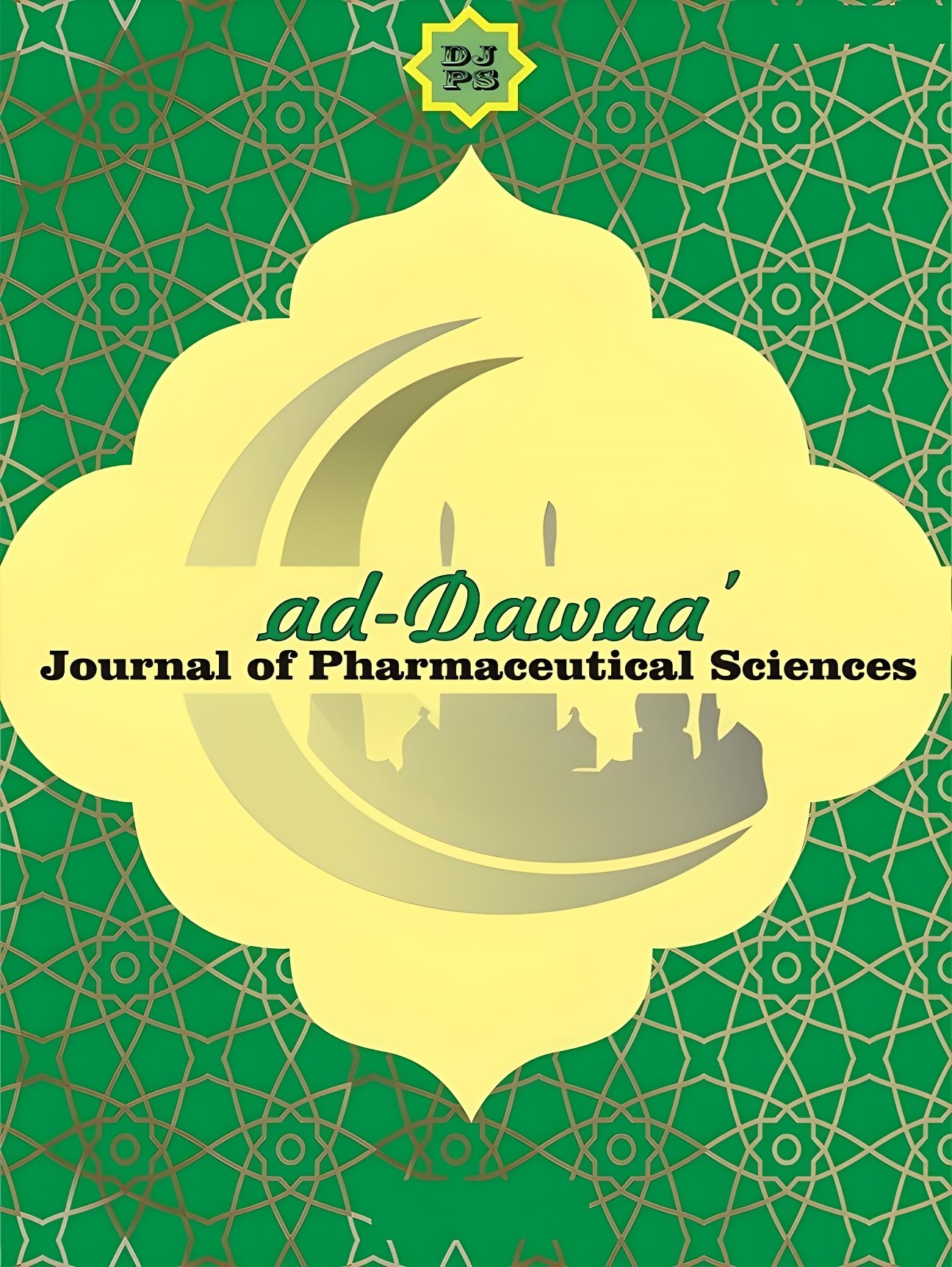Development of Captopril Analysis Method in Traditional Antihypertensive Medicine by Densitometry
DOI:
https://doi.org/10.24252/djps.v8i1.53926Keywords:
Antihypertensive medicine , captopril , TLC-densitometry , antihypertensiveAbstract
Introduction: The utilisation of traditional medicine to address health concerns is on the rise. One such traditional medicine product is antihypertensive herbal medicine. The Indonesian Food and Drug Authority (BPOM) has identified the presence of medicinal chemicals in traditional medicinal products, which has the potential to pose a significant risk to consumers. Captopril is one of the antihypertensive drugs that may be added as BKO in herbal medicine. Aims: The objective of this study was to develop a method for the analysis of the chemical content of captopril in antihypertensive herbs sold online under the following brands: A, B, C, and D. Method: The analytical method used was TLC-densitometry, utilising a mobile phase of chloroform: methanol (7:3). Result: The results show that the method used has fulfilled the requisite validation criteria for linearity, limit of detection (LOD), limit of quantitation (LOQ), accuracy, and precision parameters. The results of the analysis demonstrated that the sample did not contain any detectable quantities of captopril. Conclusion: The developed method has been proven to be effective for the analysis of captopril in antihypertensive herbal products and it can be confirmed that there is no presence of captopril medicinal chemicals in samples from brands A, B, C, and D
Downloads
References
Akshada, B. S., Salim, P. G., Bhakti, C. D., Apeksha, D. M., & Vidya, A. N. (2019). Area Under Curve UV Spectrophotometric Method for Determination of Captopril in Bulk and Chromatographic Method Development for the Identification of Captopril by TLC. http://www.ajptr.com/www.ajptr.com
Downloads
Published
How to Cite
Issue
Section
License
Copyright (c) 2025 Reine Risa Risthanti*, I Gede Ari Sumartha, Fawandi Fuad Alkindi, Ryanto Budiono, Rizka Widya Ananda

This work is licensed under a Creative Commons Attribution-ShareAlike 4.0 International License.
Once an article was published in the journal, the author(s) are:
- granted to the journal right licensed under Creative Commons License Attribution that allows others to share the work with an acknowledgement of the work's authorship.
- permitted to publish their work online in third parties as it can lead to wider dissemination of the work.
- continue to be the copyright owner and allow the journal to publish the article with the CC BY-SA license
- receiving a DOI (Digital Object Identifier) of the work.







1.png)
